Zombie Bunny is Reader-supported and may earn an affiliate commission through links on our site.
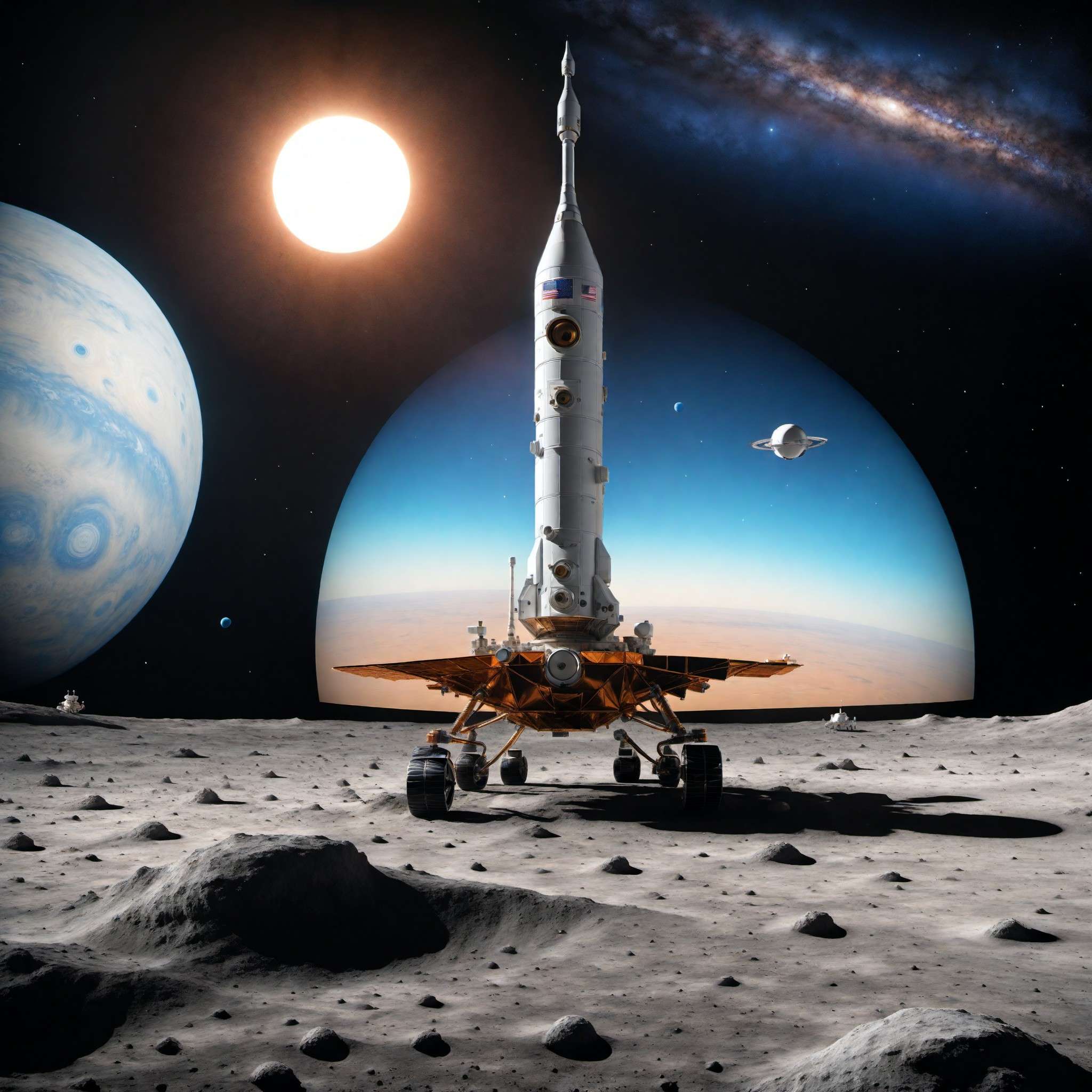
Road to Mars: Mars Missions at Kennedy Space Center
Discover the history of Mars fascination and the pivotal role of Kennedy Space Center in Mars exploration. From ancient times to the present, explore the allure of the Red Planet and the groundbreaking missions that have expanded our knowledge of Mars. Join us on this interstellar journey and get ready to explore the potential for life on Mars.
Embark on an interstellar journey with our comprehensive blog on Mars exploration. Uncover mankind’s fascination with the ‘Red Planet’ from ancient times to the modern era. Dive deeper into the role of the Kennedy Space Center in NASA’s Mars missions, including the groundbreaking Mars Rover missions. Get a glimpse of the sophisticated technologies and facilities that make these explorations possible. Meet the unsung heroes behind the scenes and understand the challenges and triumphs that mark our path to Mars. This blog also explores the future of Mars exploration, highlighting the eagerly anticipated Mars Sample Return mission and the Artemis program for human exploration. Get ready to explore Mars, from its reddish landscapes to the potential for life on the planet.
Introduction
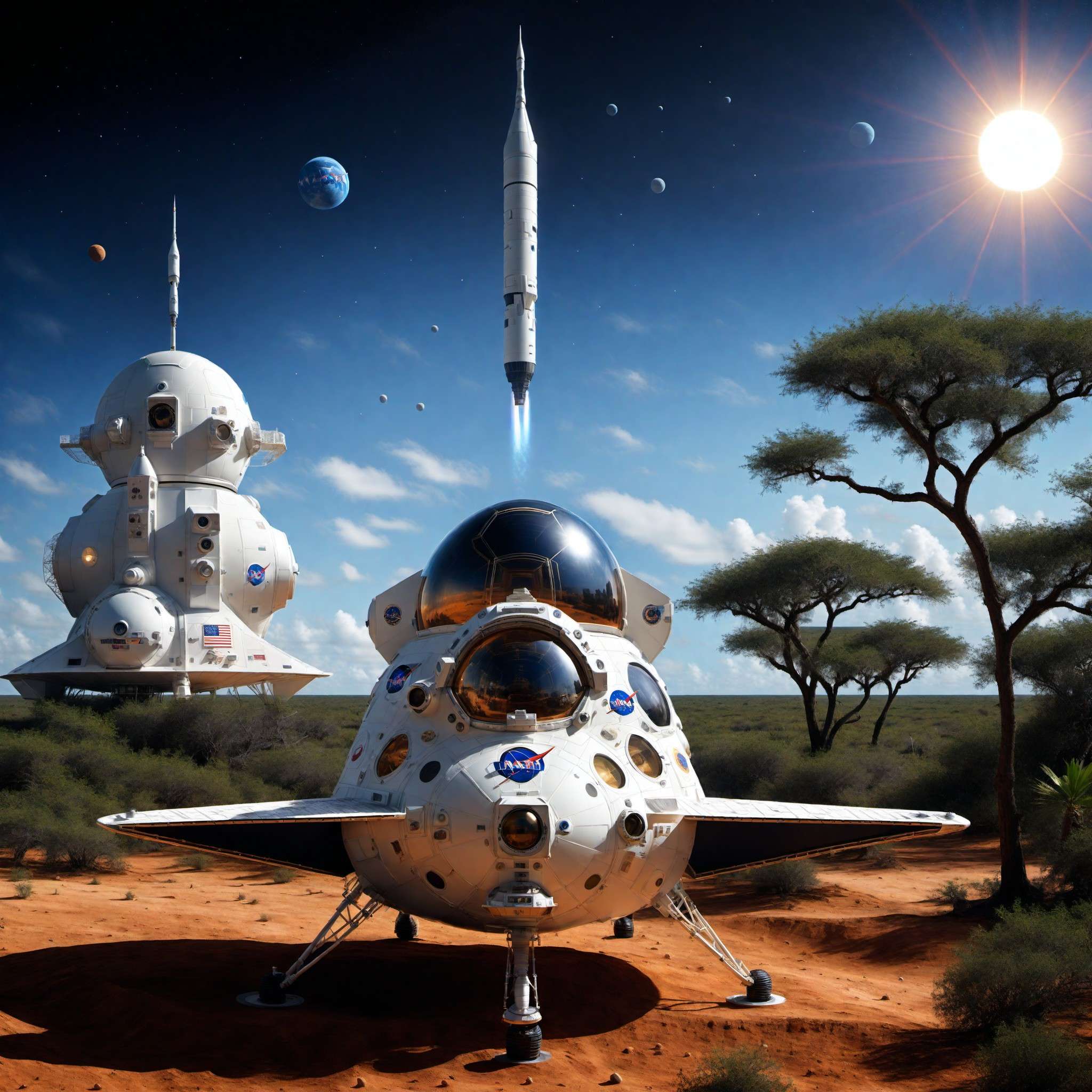
© Copyright , ZombieBunny.Org
Overview of Mars fascination throughout history
From the dawn of civilization, Mars has held a unique fascination for mankind. As the fourth planet from the sun and the second smallest planet in the solar system, it is often visible to the naked eye and has been observed by humans for thousands of years. Its distinct reddish hue, which it owes to iron oxide or rust on its surface, has earned it the moniker of the ‘Red Planet’. Ancient cultures, mesmerized by its color and brightness, associated Mars with deities of war and aggression. The Romans named it after their god of war, symbolizing its fiery and unpredictable nature.
In the modern era, Mars continues to captivate our collective imagination. The advancement of space technology in the 20th century transformed our relationship with the Red Planet from mere celestial observation to active exploration. The proposal of the existence of water and the potential for life has spurred numerous missions to Mars, with the goal of understanding its geological structure, climate, and the possibility of it once harboring life. This fascination with Mars has also permeated popular culture, with countless books, movies, and media dedicated to speculating on what a future with humans on Mars might look like. As we stand on the precipice of a new era of Mars exploration, the allure of the Red Planet remains undiminished, continuing to inspire our pursuit of knowledge and exploration.
Roles of Kennedy Space Center in space exploration
The Kennedy Space Center, located on Merritt Island, Florida, has been at the forefront of our ventures into space since its inception in 1962. Originally established as the launch site for the Apollo missions, it has since played a pivotal role in numerous space exploration missions, including those aimed at Mars. Functioning as NASA’s primary launch center for human spaceflight, it has fostered countless technological advancements and has been instrumental in pushing the boundaries of what we consider possible.
The Kennedy Space Center is home to some of the most cutting-edge technologies and facilities in the world. Its Vehicle Assembly Building, one of the largest buildings in the world by volume, is where spacecraft are assembled before being transported to the launch pad. The Launch Complex 39, used for the Apollo missions and now repurposed for the SpaceX Falcon and upcoming Artemis missions, showcases the center’s ability to adapt and evolve with changing space technologies and objectives.
In addition to its technical contributions, the Kennedy Space Center also plays a crucial role in educating the public about space exploration. Its visitor complex offers a unique insight into the workings of space missions, with exhibits and displays that bring the allure of the cosmos closer to the public. From the historical Moon missions to the future missions to Mars, the Kennedy Space Center remains a beacon for our collective aspiration to explore the universe, solidifying its role as the gateway to space exploration.
Introduction to Mars missions at Kennedy Space Center
Kennedy Space Center’s role in Mars exploration is monumental, as it is the cornerstone for numerous Mars missions launched by NASA. Its strategic location and advanced facilities have made it an ideal site for launching spacecraft to the Red Planet. The center’s state-of-the-art technology, coupled with the expertise of its scientists and engineers, have played crucial roles in enabling these exploratory missions.
One of the most notable Mars missions launched from the Kennedy Space Center is the Mars Rover missions. These include the Mars Exploration Rovers Spirit and Opportunity, the Mars Science Laboratory mission with the Curiosity rover, and most recently, the Mars 2020 mission with the Perseverance rover and Ingenuity helicopter. Each of these missions has significantly expanded our understanding of Mars’ geology, climate, and the potential for life, both past and present.
The Mars missions launched from Kennedy Space Center have not only made key scientific discoveries but have also paved the way for future human exploration of Mars. The center continues to work on developing new technologies and strategies for Mars missions, including the upcoming Artemis program, which aims to return humans to the Moon and help prepare for human exploration of Mars. As we set our sights on the Red Planet, the Kennedy Space Center continues to be a vital part of humanity’s quest to explore Mars and the deeper cosmos.
Evolution of Mars Missions
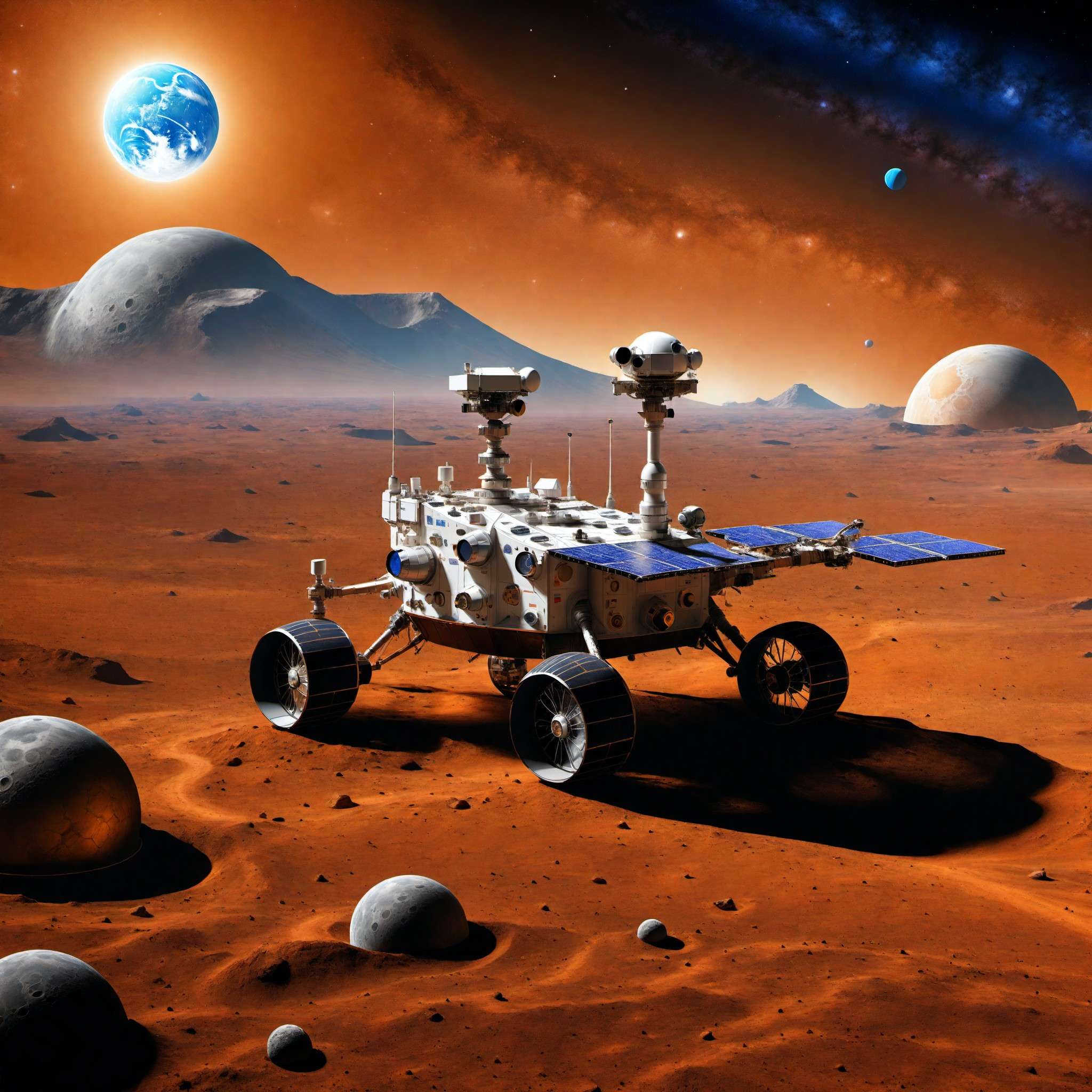
© Copyright , ZombieBunny.Org
Timeline of Mars missions conducted at Kennedy Space Center
The journey to Mars began in earnest in the 1960s, but it was not until the 1970s that the Kennedy Space Center played a crucial role in launching the first successful missions to the Red Planet. The Viking 1 and Viking 2 missions, both launched in 1975, were the first U.S. missions to land a spacecraft safely on Mars and return images of the surface. These missions set the stage for future Mars exploration, providing valuable insights into the planet’s atmosphere and surface.
The 1990s saw the launch of Mars Pathfinder, a mission that included the first successful deployment of a rover, Sojourner, on Mars. This was followed by the Mars Exploration Rovers, Spirit and Opportunity, in 2003. Both rovers greatly exceeded their planned missions of 90 Martian days, with Spirit operating until 2010 and Opportunity until 2018.
The Mars Science Laboratory mission, launched in 2011, delivered the Curiosity rover to Mars. Curiosity’s ongoing exploration has led to numerous scientific discoveries, including evidence of a past environment suitable for microbial life. Most recently, the Mars 2020 mission launched the Perseverance rover and Ingenuity helicopter, marking yet another milestone in Mars exploration.
The Kennedy Space Center has been integral to all these missions, providing the launch platforms and the expertise to send these sophisticated machines on their journey to Mars. As we move forward, the center will continue to play a key role in our quest to understand the Red Planet.
Technological advancements in Mars exploration
Mars exploration has seen a significant evolution of technology over the years, with the Kennedy Space Center being a hub for many of these advancements. From the first Mars probes to the latest rovers, each mission has seen a leap forward in technology, expanding our capability to explore the Red Planet.
Mars rovers, in particular, have been at the forefront of these technological advancements. Starting with the Sojourner rover, part of the Mars Pathfinder mission, we have developed increasingly sophisticated rovers, each designed to outperform its predecessor. The Mars Exploration Rovers, Spirit and Opportunity, introduced new mobility and imaging capabilities. The Mars Science Laboratory’s rover, Curiosity, took this a step further, carrying the most advanced payload of scientific gear ever used on Mars’ surface for a rover of its size.
The latest rover, Perseverance, part of the Mars 2020 mission, is the most technologically advanced rover ever built. It carries a suite of scientific instruments designed to explore Mars in ways never before possible, from a state-of-the-art camera system to the first-ever Mars Helicopter, Ingenuity.
Equally important are the technologies that deliver these rovers to Mars. Advanced launch systems, precision landing technologies, and innovative entry, descent, and landing strategies have all been essential in ensuring these missions’ success. As we continue to push the boundaries of technology, the Kennedy Space Center remains at the heart of these innovations, taking us one step closer to unraveling the mysteries of Mars.
Scientific discoveries from Mars missions
The Mars missions launched from Kennedy Space Center have significantly advanced our understanding of the Red Planet. Each mission, equipped with a suite of scientific instruments, has been designed to answer specific questions about Mars, leading to numerous groundbreaking discoveries.
The Viking missions of the 1970s provided the first detailed images of the Martian surface, revealing a world of vast plains, towering volcanoes, and deep canyons. These missions also conducted the first experiments searching for signs of life, yielding complex results that continue to be analyzed and debated today.
The Mars Exploration Rovers, Spirit and Opportunity, discovered strong evidence of past water activity on Mars. They found rocks and soils indicating that Mars had a wet past, with conditions that could have been suitable for life as we know it.
The Curiosity rover, part of the Mars Science Laboratory mission, made an even more astounding discovery: it found evidence of an ancient Martian environment that could have supported microbial life. More recently, the Perseverance rover has begun its mission to search for signs of ancient life and collect soil and rock samples for future return to Earth.
These discoveries have fundamentally reshaped our understanding of Mars. They have shown us that Mars is not just a barren, lifeless world, but a planet with a complex geological history and the potential to have once harbored life. As we continue to explore Mars, we look forward to the new insights that future missions will undoubtedly bring.
The Heroes Behind the Scene
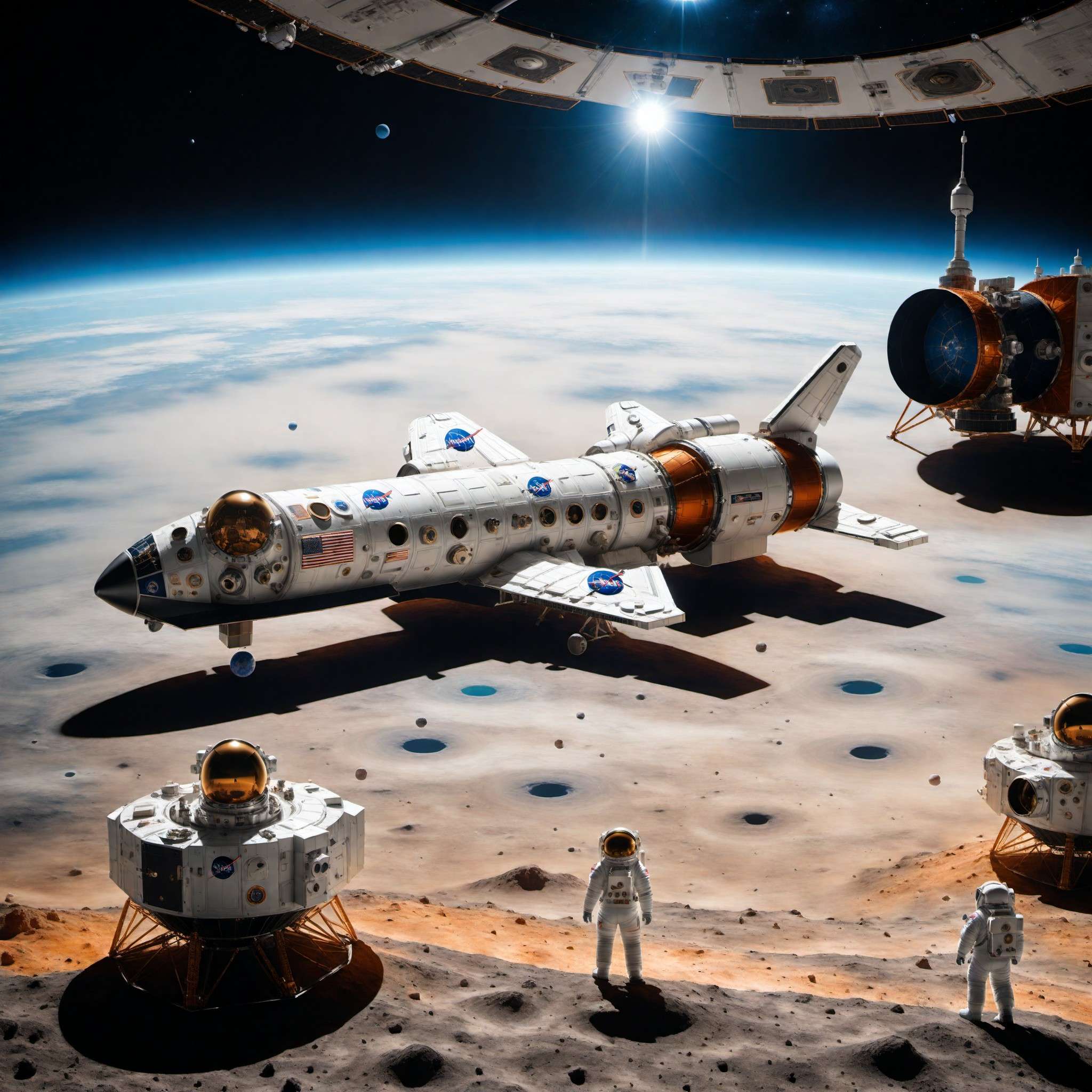
© Copyright , ZombieBunny.Org
Profiles of key individuals involved in Mars missions
Behind every successful Mars mission, there is a team of dedicated individuals whose hard work and innovation make it all possible. At the Kennedy Space Center, these individuals come from a variety of fields, from engineers and scientists to mission control operators and astronauts, all contributing their unique skills and expertise.
One such individual is Dr. Jim Green, NASA’s Chief Scientist, who has been an integral part of several Mars missions. His work in planetary science has helped shape our understanding of Mars and has been instrumental in planning future missions to the Red Planet.
Another notable figure is Dr. Jennifer Trosper, the Project Manager for the Mars 2020 Perseverance rover mission. With a career at NASA spanning over two decades, she has worked on multiple Mars rover missions and played a critical role in the successful landing of Perseverance on Mars.
Then there’s Alicia Dwyer Cianciolo, an aerospace engineer who played a pivotal role in the entry, descent, and landing phase of the Mars 2020 mission. Her work ensured that Perseverance could safely navigate the Martian atmosphere and land on the desired location on Mars.
These individuals, along with countless others at Kennedy Space Center, are the unsung heroes of Mars exploration. Their dedication and ingenuity continue to push the boundaries of what is possible, paving the way for future exploration of the Red Planet.
Behind the scenes of mission control
Behind every successful Mars mission is the nerve center of the operation: mission control. This is where teams of engineers and scientists work tirelessly, monitoring every aspect of the mission from launch to landing and beyond. It’s a place of high stakes and high rewards, where every decision matters and teamwork is paramount.
At Kennedy Space Center, the Launch Control Center (LCC) is the heart of each mission’s launch operations. From this hub, teams oversee the final preparations of the spacecraft, monitor the launch countdown, and manage the launch itself. Equipped with advanced systems and technology, the LCC is designed to handle the complexities and challenges of launching a spacecraft to Mars.
Once the spacecraft is en route to Mars, the mission control responsibilities transition to the Jet Propulsion Laboratory in California. Here, teams track the spacecraft’s journey to Mars, oversee its entry, descent, and landing, and manage the mission’s operations on the Martian surface.
Despite the high-pressure environment, the atmosphere in mission control is one of focus, collaboration, and camaraderie. The teams work in shifts, around the clock, to ensure the mission’s success. They celebrate the triumphs, navigate the challenges, and learn from the failures. Mission control is more than just a room full of consoles; it’s the heart and soul of every Mars mission, embodying the dedication, ingenuity, and relentless pursuit of knowledge that defines our exploration of the Red Planet.
Preparation and training for Mars missions
The path to a successful Mars mission starts long before the spacecraft ever reaches the launch pad. It involves years of meticulous preparation and training, a relentless pursuit of knowledge and understanding, and a commitment to overcoming the many challenges that arise along the way.
At the Kennedy Space Center, this preparation involves teams of scientists, engineers, technicians, and astronauts working together to design, build, and test every aspect of the mission. This includes the spacecraft and its instruments, the launch vehicle, and the mission’s overall plan and objectives. Each component must meet precise specifications and undergo rigorous testing to ensure it can withstand the harsh conditions of space and the Martian environment.
Training is also a crucial part of Mars mission preparation. For mission control teams, this involves simulations and drills to practice every phase of the mission, from launch to landing and rover operations. These training sessions help the teams prepare for various scenarios, including potential problems and emergencies, ensuring they are ready to respond quickly and effectively during the actual mission.
For astronauts involved in future manned Mars missions, training will be even more intensive. It will include physical and mental conditioning, technical and scientific training, and simulations of living and working on Mars.
The preparation and training for Mars missions are a testament to the dedication, ingenuity, and perseverance that define the teams at Kennedy Space Center. It’s a process that highlights the enormous effort and commitment required to expand our understanding of the universe and our place within it.
Cutting-Edge Technology
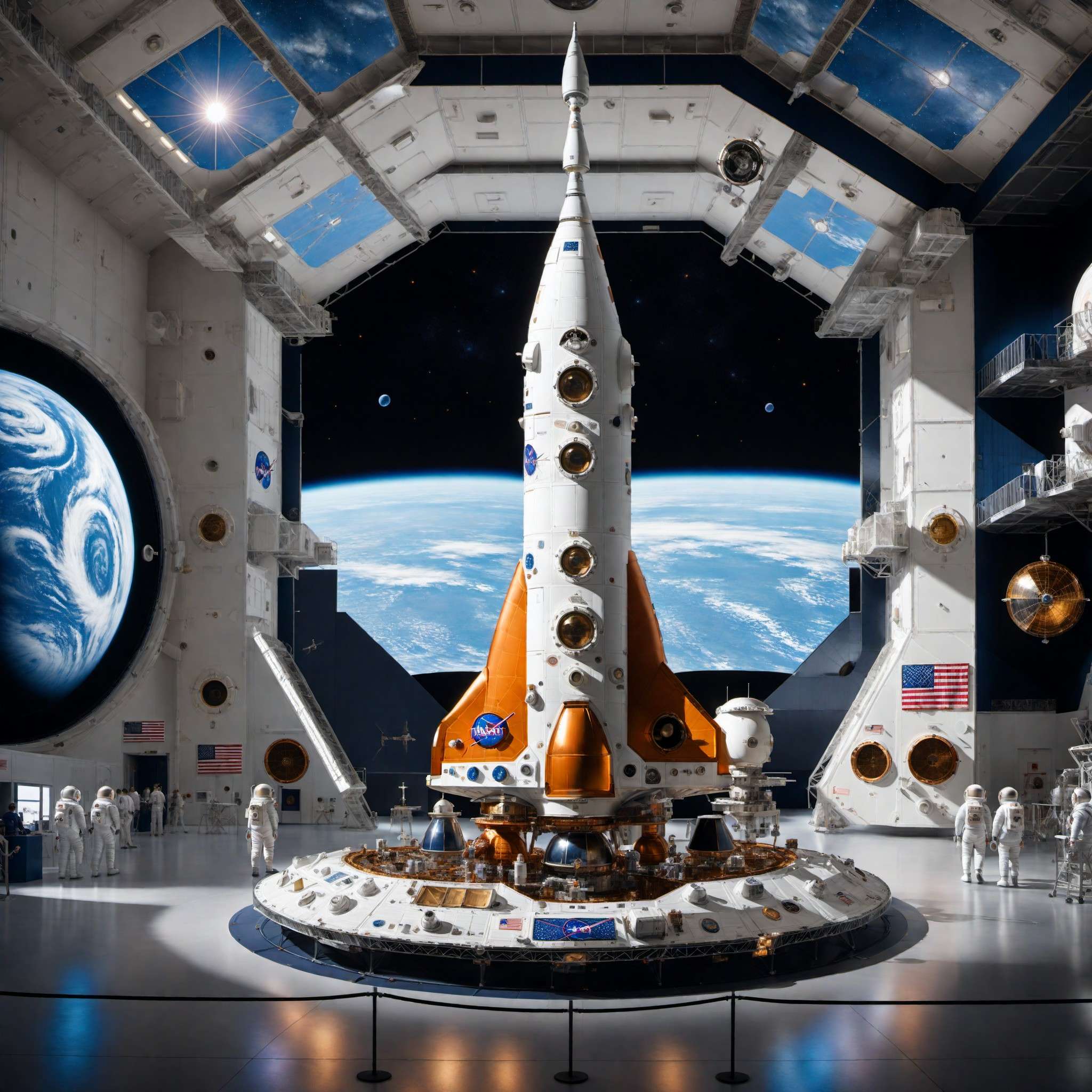
© Copyright , ZombieBunny.Org
Advanced technologies used in Mars missions
The exploration of Mars represents a pinnacle of technological achievement, requiring innovative solutions to complex problems. At the Kennedy Space Center, cutting-edge technologies are developed and utilized to ensure the success of these ambitious missions.
One of the most significant advancements in Mars exploration has been the development of sophisticated rovers. These robotic explorers, like Spirit, Opportunity, Curiosity, and most recently, Perseverance, are equipped with a suite of scientific instruments that allow them to probe the Martian surface and atmosphere in unprecedented detail. They are capable of self-navigation, drilling into rocks, analyzing samples, and transmitting data back to Earth.
Another crucial technology is the entry, descent, and landing (EDL) systems. Mars has a notoriously thin atmosphere, making landing a spacecraft extremely challenging. Innovative EDL systems, such as the sky crane used to lower the Curiosity and Perseverance rovers onto the Martian surface, have been critical in overcoming these challenges.
The Mars 2020 mission introduced another groundbreaking technology: the Ingenuity helicopter. This small, autonomous rotorcraft demonstrated powered flight in the thin Martian atmosphere for the first time, paving the way for future aerial exploration of Mars.
These advanced technologies, along with many others, are crucial in our quest to explore Mars and search for signs of past or present life. As we look towards the future of Mars exploration, the Kennedy Space Center continues to drive technological innovation, pushing the boundaries of what is possible in space exploration.
Features and functions of Mars rovers and landers
Mars rovers and landers are the frontline explorers of the Red Planet, designed with an array of features and functions to navigate and study the Martian surface. These robotic explorers, housed and launched from Kennedy Space Center, are marvels of technological innovation, each iteration more advanced than its predecessor.
Initial Mars landers, such as the Viking landers, were stationary platforms equipped with instruments to study the Martian soil and atmosphere. They provided the first in-situ measurements of Mars, offering valuable insights into its geology and climate.
The introduction of rovers added a new dimension to Mars exploration. Beginning with Sojourner, then Spirit and Opportunity, and later Curiosity and Perseverance, Mars rovers have brought mobility to Mars exploration. Equipped with cameras and scientific instruments, they can traverse the Martian landscape, analyze rock and soil samples, and capture stunning images of Mars.
The latest rover, Perseverance, is the most sophisticated yet. It has a suite of scientific instruments designed to search for signs of ancient microbial life, characterize the planet’s geology and climate, and collect samples for future return to Earth. It’s also accompanied by the Ingenuity helicopter, a technology demonstration to test powered flight on Mars.
These features and functions of Mars rovers and landers have transformed our understanding of Mars. As we continue to innovate and introduce new technologies, we continue to unlock the secrets of the Red Planet, bringing us one step closer to answering the fundamental question: Are we alone in the universe?
Innovations at Kennedy Space Center for Mars exploration
The Kennedy Space Center is a hotbed of innovation, constantly pushing the boundaries of what’s possible in space exploration. For Mars missions, in particular, the center has been at the forefront of developing and implementing new technologies and strategies.
One of the key areas of innovation at Kennedy Space Center is in launch technology. The center’s Launch Services Program provides a range of services, including the oversight of launch vehicle production, testing, and launch operations. The program has supported the launch of numerous Mars missions, including the Mars Exploration Rovers, Mars Science Laboratory, and Mars 2020 missions.
Another area of innovation is in spacecraft assembly and testing. The center’s Payload Hazardous Servicing Facility provides a sterile environment for spacecraft processing, ensuring they are ready for the harsh conditions of space. This facility was instrumental in the assembly and testing of the Mars 2020 Perseverance rover.
The center is also involved in developing technologies for future Mars missions, including the upcoming Artemis program. This program aims to return humans to the Moon and use it as a stepping stone for future Mars exploration. The Kennedy Space Center is playing a leading role in this effort, hosting the launch of the Artemis I mission and developing new systems and infrastructure for human exploration of Mars.
Through these and other innovations, the Kennedy Space Center continues to drive our exploration of Mars, turning the audacious goal of reaching the Red Planet into a reality.
Challenges and Triumphs
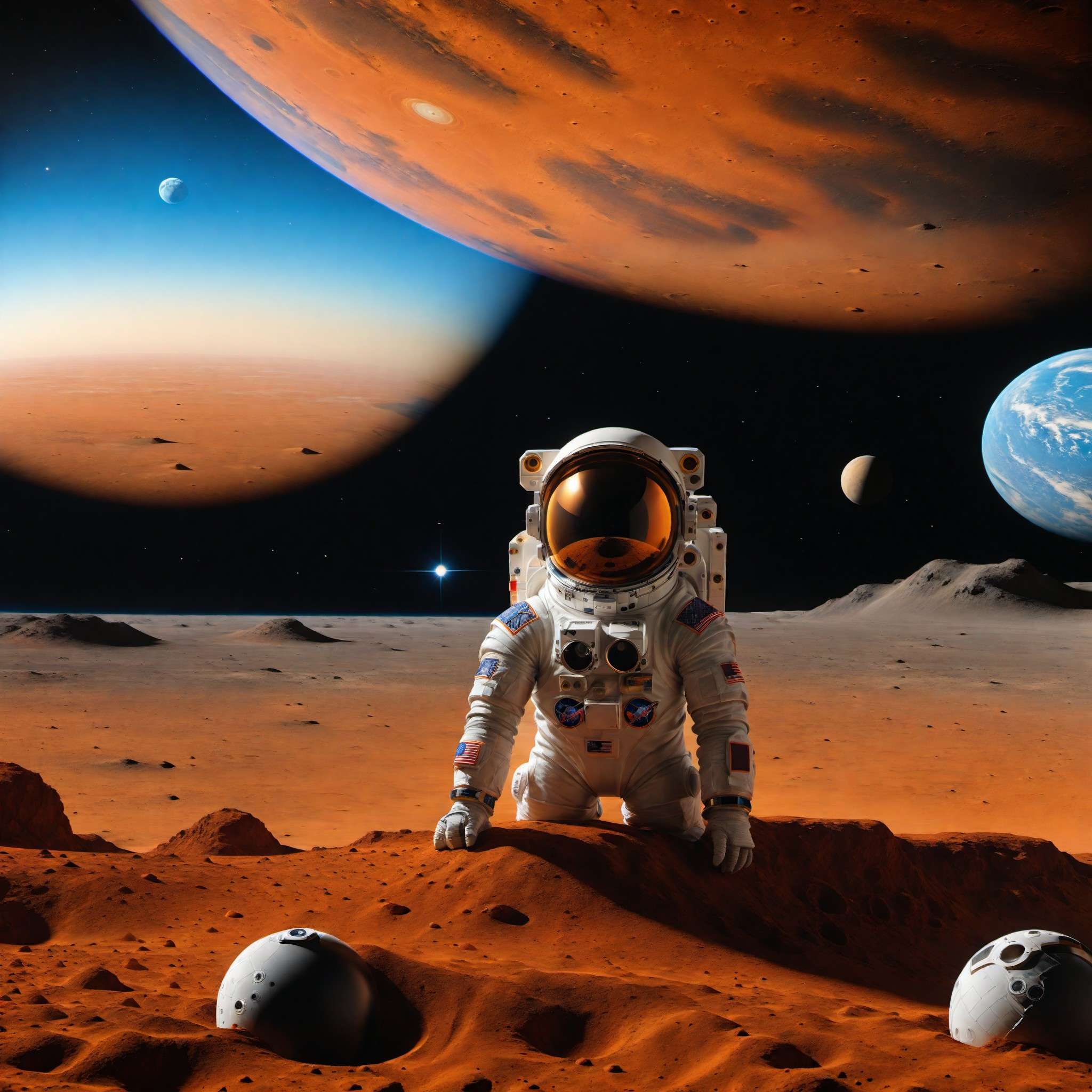
© Copyright , ZombieBunny.Org
Major challenges faced in Mars missions
Mars missions are a testament to human ingenuity and the spirit of exploration, yet they are far from easy. The road to Mars is fraught with challenges, requiring innovative solutions and a deep understanding of both the destination and the technologies employed.
One of the most significant challenges is the sheer distance to Mars. At its closest, Mars is still tens of millions of miles away, requiring spacecraft to endure a long and treacherous journey through space. This distance also results in significant communication delays, making real-time control of Mars rovers impossible and requiring them to be largely autonomous.
The harsh environment of Mars presents another set of challenges. Its thin atmosphere makes landing a spacecraft exceedingly difficult, leading to what is often referred to as “seven minutes of terror” as the spacecraft undergoes entry, descent, and landing. The Martian surface is also a hostile environment, with extreme temperatures, dust storms, and radiation posing risks to rovers and landers.
Lastly, there are the technical challenges. Designing and building a spacecraft capable of surviving the journey to Mars, operating on the Martian surface, and carrying out scientific experiments is a monumental task. Each component must be meticulously designed, rigorously tested, and carefully integrated into the final spacecraft.
Despite these challenges, the teams at Kennedy Space Center and across NASA have continually risen to the occasion, demonstrating time and again that with innovation, determination, and a spirit of exploration, even the most ambitious goals can be within our reach.
Significant successes in Mars exploration
Humanity’s exploration of Mars has been marked by a series of significant successes, each one expanding our knowledge of the Red Planet and bringing us closer to answering fundamental questions about our place in the universe.
One of the earliest successes was the Viking missions, which in the 1970s became the first U.S. missions to land spacecraft safely on Mars and return images of the surface. These missions offered humanity its first close-up look at the Martian landscape, revealing a world both alien and familiar.
The Mars Exploration Rovers, Spirit and Opportunity, were another significant success. Launched in 2003, these twin rovers were designed for a 90 Martian day mission but vastly outlived their life expectancy. Spirit explored Mars for six years, and Opportunity for an astonishing 15 years, uncovering evidence of past water activity on Mars.
The Mars Science Laboratory mission, with its Curiosity rover, marked a new era of Mars exploration. Curiosity has been exploring the Gale Crater since 2012, making numerous scientific discoveries, including evidence of an ancient environment that could have supported microbial life.
Most recently, the Mars 2020 mission successfully landed the Perseverance rover and Ingenuity helicopter on Mars. Perseverance is now set to explore the Jezero Crater, an ancient lakebed, to search for signs of ancient microbial life, while Ingenuity has already made history by performing the first powered flight on another planet.
These successes represent the culmination of years of hard work, innovation, and perseverance from the teams at Kennedy Space Center and across NASA, and serve as a testament to what can be achieved when we dare to explore.
Triumphs and learning from failures
In the pursuit of Mars exploration, triumphs are celebrated, but equally significant are the lessons learned from failures. Each setback encountered on the road to Mars provides valuable insights that inform future missions and drive innovation at the Kennedy Space Center and across NASA.
One notable setback was the loss of the Mars Climate Orbiter in 1999 due to a navigation error. This mission served as a stark reminder of the importance of meticulous attention to detail in space exploration. The lessons learned from this failure led to improvements in mission planning, design, and operations, contributing to the success of future Mars missions.
Similarly, the Mars Polar Lander, lost during its descent to the Martian surface in the same year, provided valuable lessons on the challenges of landing on Mars. This led to the development of new landing technologies and strategies, which were instrumental in the successful landings of subsequent rovers, including Spirit, Opportunity, Curiosity, and Perseverance.
Even in the face of failures, the teams at Kennedy Space Center have shown resilience and a commitment to learning and improvement. They understand that failures are not the end, but rather stepping stones on the path to success. As we continue to explore Mars, the triumphs and lessons learned from past missions guide us, driving us forward in our quest to understand the Red Planet and our place in the cosmos.
The Next Frontier: Future Mars Missions
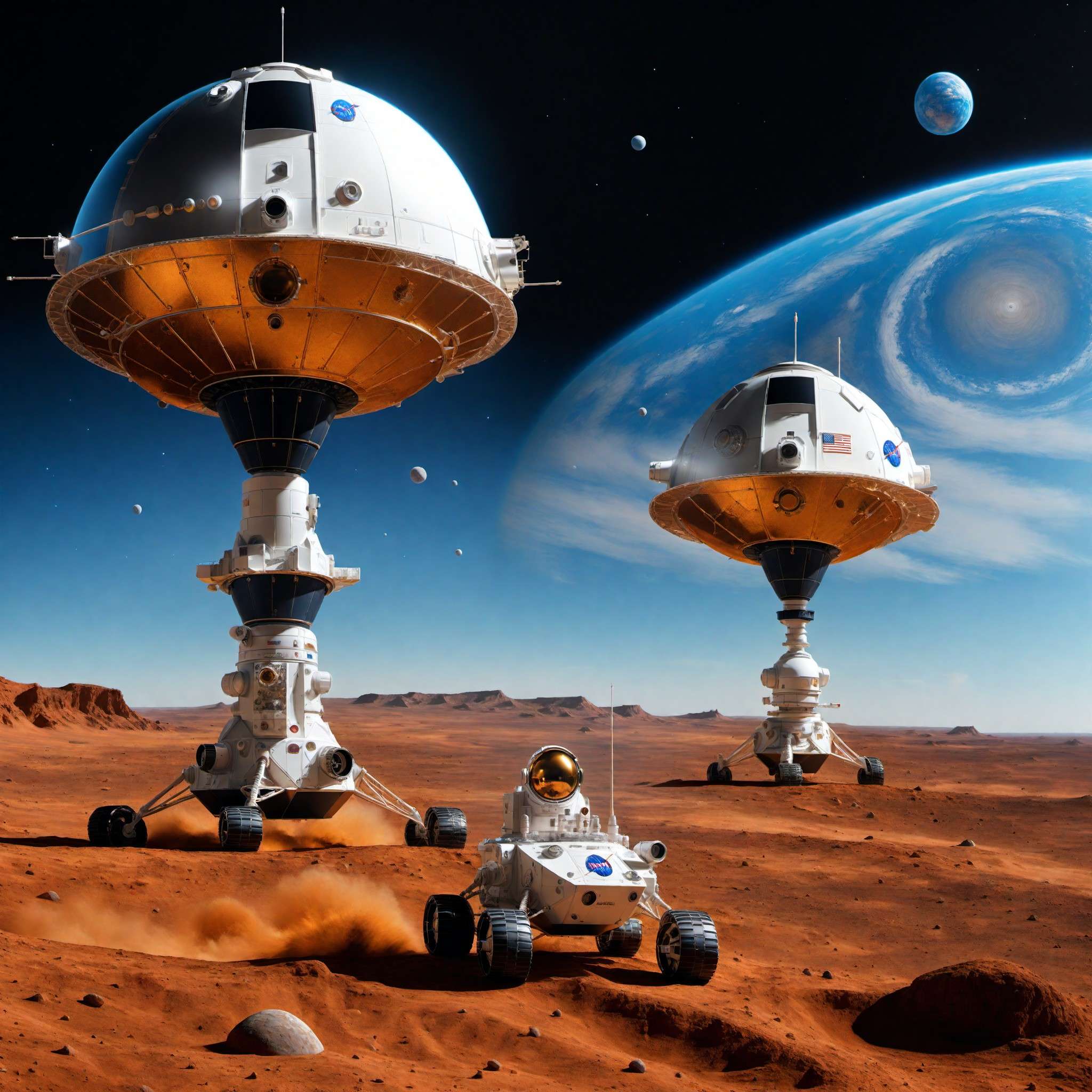
© Copyright , ZombieBunny.Org
Plans for future Mars missions
The exploration of Mars is a continuous journey, and the Kennedy Space Center is already gearing up for future missions that will push the boundaries of our knowledge and capabilities.
One of the most exciting upcoming missions is the planned return of Martian samples to Earth. The Mars 2020 mission has begun this process, with the Perseverance rover tasked with collecting and storing rock and soil samples. Future missions will retrieve these samples and bring them back to Earth for detailed analysis, marking the first time that Martian samples will be available for study in Earth-based laboratories.
Beyond robotic exploration, the ultimate goal is to send humans to Mars. NASA’s Artemis program, which aims to return humans to the Moon by 2024, is a stepping stone towards this goal. The Moon will serve as a proving ground for the technologies and strategies needed for human exploration of Mars.
NASA is also planning a Mars Sample Return mission, which will bring back samples collected by the Perseverance rover. This mission will involve several innovative technologies, including a Mars Ascent Vehicle and an Earth Return Orbiter, and is set to launch within the next decade.
These plans represent the next exciting chapters in Mars exploration. As we look to the future, the teams at Kennedy Space Center continue to innovate and prepare, ready to take on the challenges and opportunities that lie ahead on the road to Mars.
Technological advancements paving the way for future exploration
As we set our sights on future Mars missions, technological advancements continue to play a crucial role. The Kennedy Space Center is at the forefront of these advancements, developing and implementing cutting-edge technologies that will enable the next generation of Mars exploration.
One key area of advancement is in propulsion technology. The development of more efficient and powerful propulsion systems will reduce the travel time to Mars, making manned missions more feasible. NASA is currently working on the Space Launch System, a powerful rocket designed to carry astronauts on the Artemis lunar missions and future Mars missions.
Another important area of technological advancement is in spacecraft design and technology. Future Mars missions will require spacecraft capable of carrying larger payloads and sustaining human life for extended periods. This includes advancements in life support systems, radiation protection, and habitat design.
Robotics and autonomous systems are also crucial for future Mars exploration. From advanced rovers to drones like the Ingenuity helicopter, these systems will enable us to explore Mars in ways not possible with human explorers alone.
Lastly, advancements in communication technology will be vital for future Mars missions. This includes developing faster and more reliable communication systems to ensure that data from Mars can be sent back to Earth quickly and accurately.
Through these technological advancements, the Kennedy Space Center continues to pave the way for future Mars exploration, turning the dream of human exploration of Mars into a reality.
The vision for Mars colonization
The vision of colonizing Mars is a bold and ambitious goal that has captivated scientists, engineers, and dreamers alike. It represents the next great frontier in human exploration and a potential solution for long-term survival of our species. The Kennedy Space Center, with its leading-edge technologies and pioneering missions, plays a significant role in turning this vision into reality.
Colonizing Mars would involve not just visiting the planet, but establishing a permanent, self-sustaining human presence. This would require significant advancements in numerous areas, including space travel, life support systems, and in-situ resource utilization – the ability to use Mars’ natural resources to support human life and operations.
NASA’s Artemis program, which aims to return humans to the Moon, is a key step towards this vision. By using the Moon as a proving ground, we can test the technologies and strategies needed for a Mars colony, from life support systems to habitat construction and resource extraction.
Another critical piece of the puzzle is the Mars Sample Return mission. By studying Martian soil and rock samples in detail, scientists can gain a better understanding of the Red Planet’s potential to support life, as well as identify potential resources that could be used by future colonists.
While the vision of Mars colonization is still decades away from being realized, the work being done at Kennedy Space Center and across NASA is bringing us closer to this goal. As we continue to push the boundaries of space exploration, the dream of a human colony on Mars becomes more and more attainable.
Kennedy Space Center: Gateway to Mars
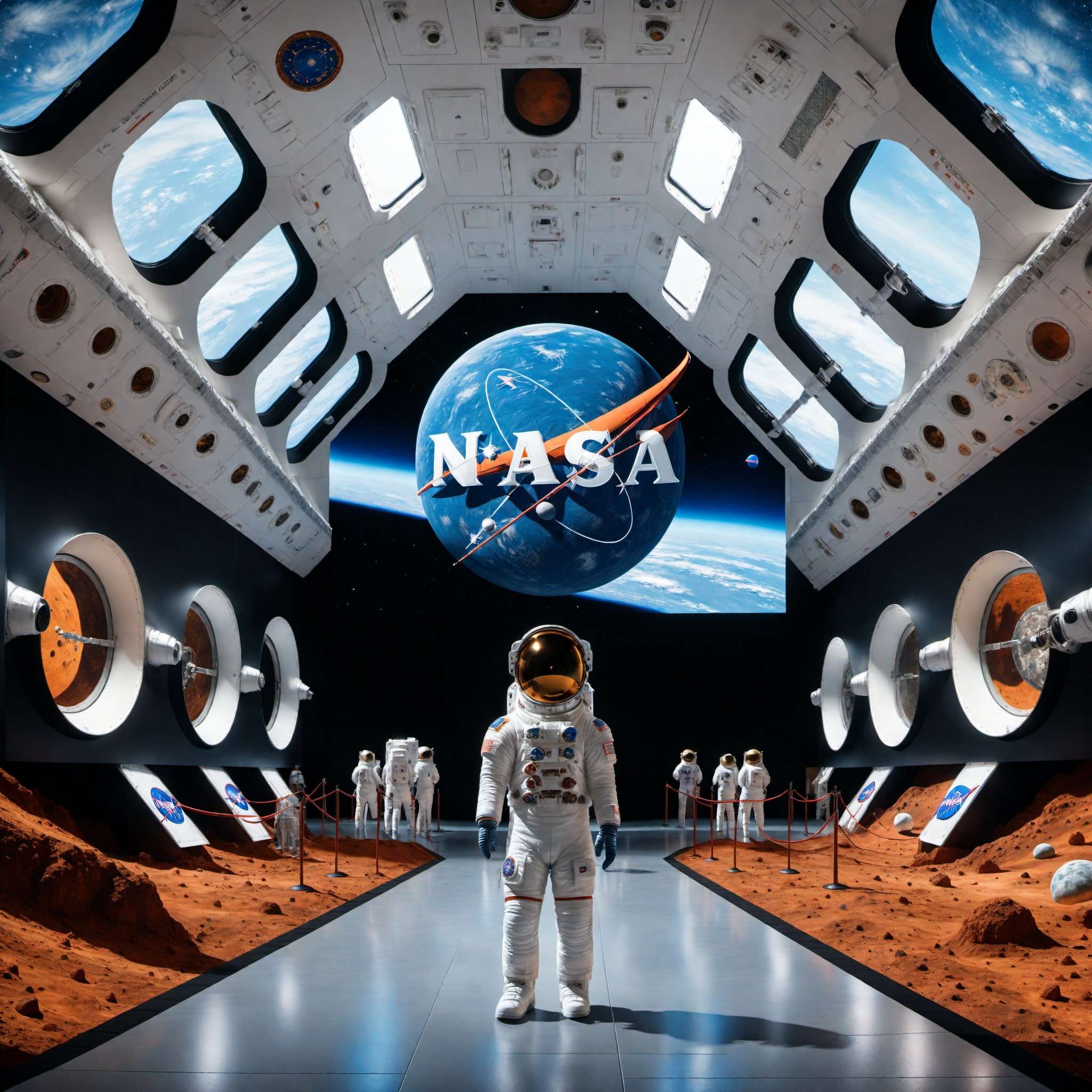
© Copyright , ZombieBunny.Org
Experiencing Mars missions at Kennedy Space Center
Kennedy Space Center serves as more than just the launch site for Mars missions; it’s a place where the public can experience the excitement and wonder of space exploration firsthand. From exhibits that take you on a journey through the history of Mars missions to live launch viewings, the Kennedy Space Center Visitor Complex offers unique ways to engage with our journey to the Red Planet.
One of the must-see attractions is the “Journey to Mars: Explorers Wanted” exhibit. Here, visitors can learn about the challenges and achievements of Mars exploration, get a glimpse of future Mars missions, and even experience what it’s like to walk on Mars through a virtual reality simulation.
The Rocket Garden is another highlight, showcasing the rockets that have launched numerous missions to Mars. Standing beneath these towering structures, visitors can get a sense of the scale and complexity of space travel.
But perhaps the most thrilling experience is watching a live launch. From designated viewing areas, spectators can witness the incredible sight of a rocket blasting off on its journey to Mars, a testament to human ingenuity and the spirit of exploration.
The Kennedy Space Center also offers educational programs, astronaut meet-and-greets, and behind-the-scenes tours, creating a rich, immersive experience for all ages. Through these experiences, the Kennedy Space Center brings the excitement of Mars exploration to Earth, inspiring a new generation of explorers to reach for the stars.
Educational programs and exhibits on Mars missions
The Kennedy Space Center is not just a hub for launching Mars missions; it’s also a gateway for learning about Mars and space exploration. Through a variety of educational programs and exhibits, visitors of all ages can delve into the fascinating world of Mars missions.
The “Journey to Mars: Explorers Wanted” exhibit is a centerpiece of this educational endeavor. This immersive, interactive exhibit allows visitors to experience the past, present, and future of Mars exploration. It features a detailed timeline of Mars missions, hands-on demonstrations, and a 3D theater presenting the challenges of traveling to and living on Mars.
For younger visitors, the Kennedy Space Center offers Mars-themed educational camps and workshops. These programs provide a fun, engaging way for children to learn about Mars and space exploration, fostering their interest in science, technology, engineering, and math.
The Astronaut Training Experience (ATX) is another highlight. This program offers visitors the chance to train like an astronaut preparing for a Mars mission. It includes a simulated mission to Mars, where participants can experience navigating the Martian surface, conducting experiments, and even growing food in a Mars base greenhouse.
From exhibits that spark curiosity to programs that foster deeper understanding, the Kennedy Space Center’s educational offerings on Mars missions provide a unique opportunity to engage with space exploration. They inspire visitors to look up at the stars and contemplate our place in the cosmos and our ongoing journey to explore the Red Planet.
Interactive displays and simulation experiences
At the Kennedy Space Center, visitors can do more than just learn about Mars missions; they can experience them through interactive displays and simulation experiences that bring the excitement of space exploration to life.
One of the key interactive displays is the Mars Rover Vehicle Navigator, where visitors can maneuver a model of a Mars rover over a simulated Martian landscape. This hands-on experience provides a glimpse into the challenges of navigating the Red Planet and the intricate operations behind each Mars mission.
The Mars Base 1 is another engaging experience. In this immersive simulation, visitors are transported to Mars to live and work for the day. As newly-trained astronauts, they are tasked with managing the base’s operations, conducting real-life science experiments, and even growing and harvesting food in the Botany Lab.
The Astronaut Training Experience (ATX) program offers another level of immersion. Here, visitors can train like real astronauts, experiencing the physical and mental challenges of a Mars mission. This includes a microgravity simulator, Mars surface exploration simulator, and other training scenarios.
The Kennedy Space Center also offers virtual reality experiences, such as the “Spacewalk Training” VR experience. This allows visitors to step into the shoes of an astronaut and perform tasks outside the International Space Station, with Mars looming in the background.
Through these interactive displays and simulation experiences, the Kennedy Space Center creates a rich, immersive environment where the thrill of Mars exploration is within reach, inspiring visitors to dream, discover, and dare to explore.
Conclusion
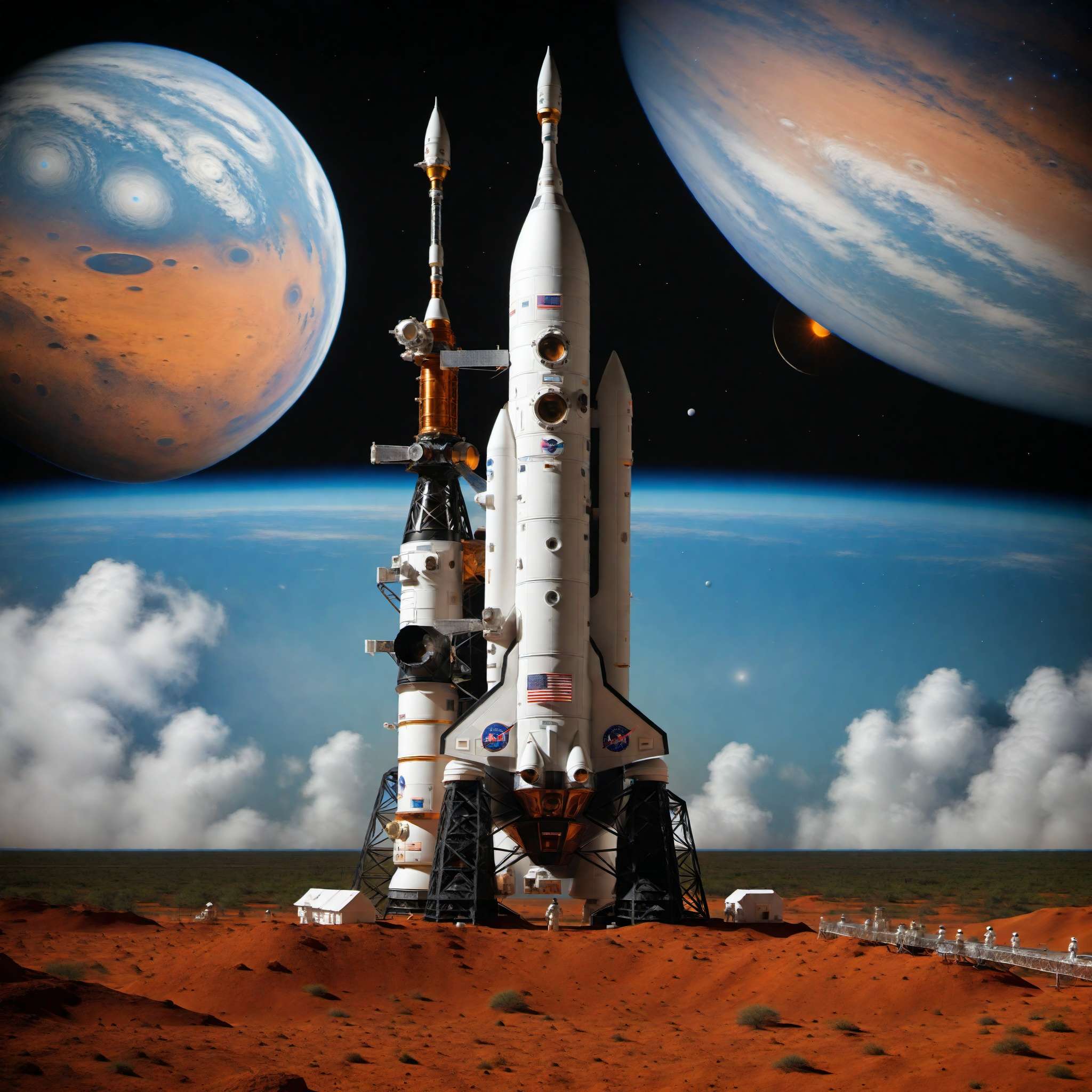
© Copyright , ZombieBunny.Org
Summary of Mars missions at Kennedy Space Center
The journey to Mars is a testament to human ingenuity, perseverance, and the relentless pursuit of knowledge. At the heart of this journey is the Kennedy Space Center, a hub for Mars missions and a gateway to the Red Planet.
From the Viking missions in the 1970s to the latest Mars 2020 mission with the Perseverance rover and Ingenuity helicopter, the Kennedy Space Center has been instrumental in our exploration of Mars. Through innovative technologies, rigorous testing, and meticulous mission planning, the center has helped send numerous spacecraft to Mars, each mission expanding our understanding of the Red Planet and bringing us closer to the ultimate goal of human exploration.
Along with its role in mission operations, the Kennedy Space Center also serves as a beacon for public engagement and education. Through its Visitor Complex, the center offers immersive exhibits, educational programs, and hands-on experiences that bring the excitement of Mars exploration to life.
Looking towards the future, the Kennedy Space Center continues to innovate, preparing for upcoming missions that will return Martian samples to Earth and lay the groundwork for human missions to Mars. As we stand on the cusp of a new era of Mars exploration, the Kennedy Space Center stands ready, leading the way in our journey to the Red Planet.
The importance of Mars exploration for humanity
The exploration of Mars holds profound significance for humanity. Beyond the scientific discoveries and technological advancements, Mars exploration taps into our innate curiosity and our drive to seek out new frontiers. The Kennedy Space Center, through its pivotal role in Mars missions, is a cornerstone in this grand endeavor.
Mars exploration allows us to answer fundamental questions about our place in the universe. By studying Mars, we can gain insights into the formation and evolution of our own planet. The search for signs of past or present life on Mars also has the potential to reshape our understanding of life itself and its potential to exist elsewhere in the universe.
Beyond the scientific implications, Mars exploration spurs technological innovation. The challenges of sending spacecraft to Mars and operating them there drive advancements in numerous fields, from propulsion and communications to robotics and autonomous systems. These advancements have applications beyond space exploration, benefiting society at large.
Mars exploration also inspires future generations. It fosters a global culture of learning, innovation, and exploration, encouraging young people to pursue careers in science, technology, engineering, and mathematics.
As we continue to explore Mars, we’re not just learning about a distant planet; we’re learning about ourselves. Through the efforts of the Kennedy Space Center and the wider scientific community, Mars exploration pushes us to broaden our horizons, challenge our limits, and strive for a future that reaches beyond our home planet.
Looking ahead: The future of Mars exploration
As we gaze towards the Red Planet, the future of Mars exploration looks brighter than ever. With each mission, we’re expanding our understanding, honing our technologies, and inching closer to the goal of human exploration. The Kennedy Space Center, with its legacy of pioneering Mars missions, stands at the forefront of this exciting journey.
The upcoming missions hold great promise. The Mars Sample Return mission, slated for later this decade, will mark a historic first in interplanetary exploration, bringing Martian samples back to Earth for detailed analysis. This mission will provide unprecedented insights into Mars’ geology and potential for past life.
In the realm of human exploration, the Artemis program’s return to the Moon is a significant step towards a manned Mars mission. The Moon will serve as a proving ground, allowing us to test technologies, strategies, and capabilities needed for humans to live and work on Mars.
We’re also looking forward to advancements in propulsion, spacecraft design, robotics, and communication technologies. These will not only facilitate Mars exploration, but also have far-reaching applications here on Earth.
As we stand on the cusp of these exciting developments, the Kennedy Space Center is poised to continue its pivotal role in Mars exploration. As we push the boundaries of what’s possible, we’re not just exploring Mars; we’re defining our future. The road to Mars is a road to a future of discovery, innovation, and limitless possibilities.
Please support our site and purchase something from our store.







